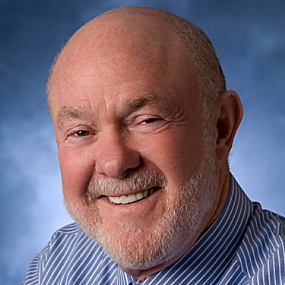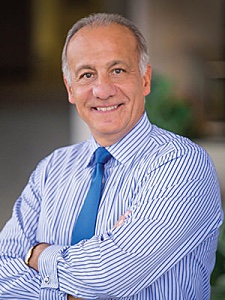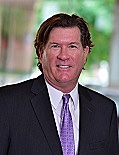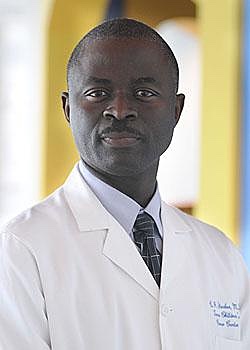Sickle Cell Initiative Launches Project to Treat Sick Children in Angola
Written by |

![]() Global biopharma Bristol-Myers Squibb has joined the public-private Angola Sickle Cell Initiative to provide Angolan children who have sickle cell disease with an effective therapy unavailable to many patients in the West African country.
Global biopharma Bristol-Myers Squibb has joined the public-private Angola Sickle Cell Initiative to provide Angolan children who have sickle cell disease with an effective therapy unavailable to many patients in the West African country.
The initiative is a collaborative project of the Angola Ministry of Health, the Baylor College of Medicine International Pediatric AIDS Initiative (BIPAI), the Texas Children’s Hospital, and Chevron’s Africa Latin America Exploration and Production Co.
 According to Baylor College of Medicine, Angola has one of the highest rates of sickle cell disease in the world, with more than 12,000 babies born with the disease annually, with an estimated half of these children dying before they are 5 years old. Before this program was launched, Angolan newborns were not screened for sickle cell. Now, though, more than 150,000 babies have been screened and more than 1,700 babies and children are currently in care and treatment.
According to Baylor College of Medicine, Angola has one of the highest rates of sickle cell disease in the world, with more than 12,000 babies born with the disease annually, with an estimated half of these children dying before they are 5 years old. Before this program was launched, Angolan newborns were not screened for sickle cell. Now, though, more than 150,000 babies have been screened and more than 1,700 babies and children are currently in care and treatment.
 The Angola Sickle Cell Initiative was launched in 2011 with $4 million in initial support from Chevron, which renewed its commitment to the program last fall with an additional $5 million in funding over five years for a total of $9 million over nine years. The program’s objective is to provide thousands of Angolan children regular access to the drug Droxia (hydroxyurea), which is being donated by Bristol-Myers Squibb.
The Angola Sickle Cell Initiative was launched in 2011 with $4 million in initial support from Chevron, which renewed its commitment to the program last fall with an additional $5 million in funding over five years for a total of $9 million over nine years. The program’s objective is to provide thousands of Angolan children regular access to the drug Droxia (hydroxyurea), which is being donated by Bristol-Myers Squibb.
Most sickle-cell patients in Angola have not previously had access to hydroxyurea. The five-year demonstration program is designed to help increase awareness of how to effectively treat children in resource-limited settings and to establish cost-benefit analyses to healthcare systems.
 “World Sickle Cell Day was June 19, so this is a momentous time to announce this new partnership to provide potentially life-altering medication to thousands of children in Angola,” said Dr. David Poplack, director of the Texas Children’s Cancer and Hematology Centers and a professor of pediatric oncology at Baylor College of Medicine, in a press release. “Hydroxyurea is known to lessen the devastating complications of sickle cell disease.”
“World Sickle Cell Day was June 19, so this is a momentous time to announce this new partnership to provide potentially life-altering medication to thousands of children in Angola,” said Dr. David Poplack, director of the Texas Children’s Cancer and Hematology Centers and a professor of pediatric oncology at Baylor College of Medicine, in a press release. “Hydroxyurea is known to lessen the devastating complications of sickle cell disease.”
In its partnership with the Angola Sickle Cell Initiative, Bristol-Myers Squibb made an initial donation of Droxia, and will donate sufficient quantities for treating up to 1,200 children during the program’s initial two years, thereafter ramping up its donations to treat 4,100 children after the pilot period. The program will launch in Angola’s capital Luanda, and in Cabinda, another major city, and  will expand to operate at additional sites. The emergency response and global health organization AmeriCares also is a key partner in shipping the drug from Bristol-Myers Squibb to Angola.
will expand to operate at additional sites. The emergency response and global health organization AmeriCares also is a key partner in shipping the drug from Bristol-Myers Squibb to Angola.
 “We are proud to partner with the Angola Sickle Cell Initiative to help bring much needed treatment to infants born with this painful and deadly disease,” says John Damonti, vice president of corporate philanthropy at Bristol-Myers Squibb and president of the Bristol-Myers Squibb Foundation, in the release. “As important as providing treatment to the 4,100 children is that at the end of this five-year demonstration project, we should have ample data needed for governments and funders to consider providing the resources necessary to support large-scale treatment programs.”
“We are proud to partner with the Angola Sickle Cell Initiative to help bring much needed treatment to infants born with this painful and deadly disease,” says John Damonti, vice president of corporate philanthropy at Bristol-Myers Squibb and president of the Bristol-Myers Squibb Foundation, in the release. “As important as providing treatment to the 4,100 children is that at the end of this five-year demonstration project, we should have ample data needed for governments and funders to consider providing the resources necessary to support large-scale treatment programs.”
The Angolan Ministry of Health has committed to continued treatment of all the hydroxyurea-treated children when they reach the age of 10 years.
(Photo courtesy Bowling Green State University)
According to Bristol-Myers Squibb, hydroxyurea (Droxia) is an antimetabolite indicated to reduce frequency of painful crises and to reduce the need for blood transfusions in patients with sickle cell anemia who have recurrent moderate to severe painful crises (generally at least three in the preceding 12 months). The company cautions that hydroxyurea should be administered only under the supervision of a physician experienced in the use of this medication for treating sickle cell anemia, since hydroxyurea treatment may be complicated by severe, even potentially life-threatening, adverse effects.
Leaders of the Angola Sickle Cell Initiative hope this five-year program will serve to demonstrate the health benefits and cost effectiveness of a hydroxyurea treatment program for infants with sickle cell disease, providing patient and outcomes data as a foundation on which to build an advocacy plan for providing treatment to all children with sickle cell in Angola and throughout the continent. Hydroxyurea currently has generic status and is included in the World Health Organization’s List of Essential Medicines.
 “Agreements like this public-private partnership allow governments to address gaps in healthcare to meet the needs of its most vulnerable citizens — sick children,” said Michael Mizwa, COO and senior vice president for the Baylor College of Medicine International Pediatric AIDS Initiative (BIPAI) and director of Texas Children’s Global Health. “We hope BIPAI’s legal and operational framework in Angola will provide a foundation for many more such partnerships in the future.”
“Agreements like this public-private partnership allow governments to address gaps in healthcare to meet the needs of its most vulnerable citizens — sick children,” said Michael Mizwa, COO and senior vice president for the Baylor College of Medicine International Pediatric AIDS Initiative (BIPAI) and director of Texas Children’s Global Health. “We hope BIPAI’s legal and operational framework in Angola will provide a foundation for many more such partnerships in the future.”
 Led by Dr. Gladstone Airewele, an associate professor of pediatrics at Baylor and head of the Global Hematology Program at Texas Children’s Hospital, the Angola Sickle Cell Initiative also includes an education and training component. More than 1,500 Angolan clinicians and service professionals have been trained through the program so far, including local physicians, nurses, laboratory technicians, phlebotomists, social workers, and research coordinators.
Led by Dr. Gladstone Airewele, an associate professor of pediatrics at Baylor and head of the Global Hematology Program at Texas Children’s Hospital, the Angola Sickle Cell Initiative also includes an education and training component. More than 1,500 Angolan clinicians and service professionals have been trained through the program so far, including local physicians, nurses, laboratory technicians, phlebotomists, social workers, and research coordinators.





